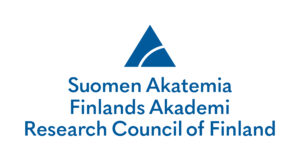Aika
1.9.2023–31.8.2027
Koordinaattori/Päätoteuttaja
Åbo Akademi
Yhteistyökumppanit
Rahoittaja
Steel is required in developing and sustaining modern society. The majority of steel is produced in processes which require carbon and thus result in carbon dioxide emissions. Steel industry is responsible for approximately 7% of annual carbon dioxide emissions in Finland as well as globally. A significant part of these emissions stems from the blast furnace process, where iron oxides are reduced with carbon
and smelted. Replacing carbon by hydrogen as a reductant in the iron oxide reduction processes has the potential to decrease carbon dioxide emissions drastically in steel industry. In Finland alone, up to 5 million tonnes of CO2 emissions could be avoided.
Hydrogen reduction research opens remarkable opportunities toward a carbon neutral society. The research outlined in the application will considerably deepen the understanding of hydrogen-based reduction of iron oxides, which is needed in the development of new industrial direct reduction processes and for increased use of hydrogen-containing reducing agents in current ironmaking processes.
The research methods include novel laboratory-scale experiments, molecular-level measurements and computational methods. The reduction behaviour of iron oxides and several different types of iron oxide pellets will be systematically studied in hydrogen containing gas of different composition and temperature. The data from the experiments is compiled in mechanistically-based accurate mathematical models for the reduction kinetics as well as in a model for the reduction of a single pellet. The experiments and modelling work will also consider the significant influence of the water-gas shift reaction resulting at increased hydrogen concentration and
catalysed by iron oxides. The pellet model is integrated in a computational model of a direct reduction process, which is applied to assess and develop new industrial hydrogen-based direct reduction concepts.
The research outlined in the application will significantly raise the level of knowledge in the field, which is a basic prerequisite for a successful future transition of the important steelmaking sector towards carbon neutrality.

Ota yhteyttä
Henrik Saxén (Vastuullinen tutkija)
Professori
Prosessi- ja systeemitekniikan laboratorio
Puh. +358 405443301